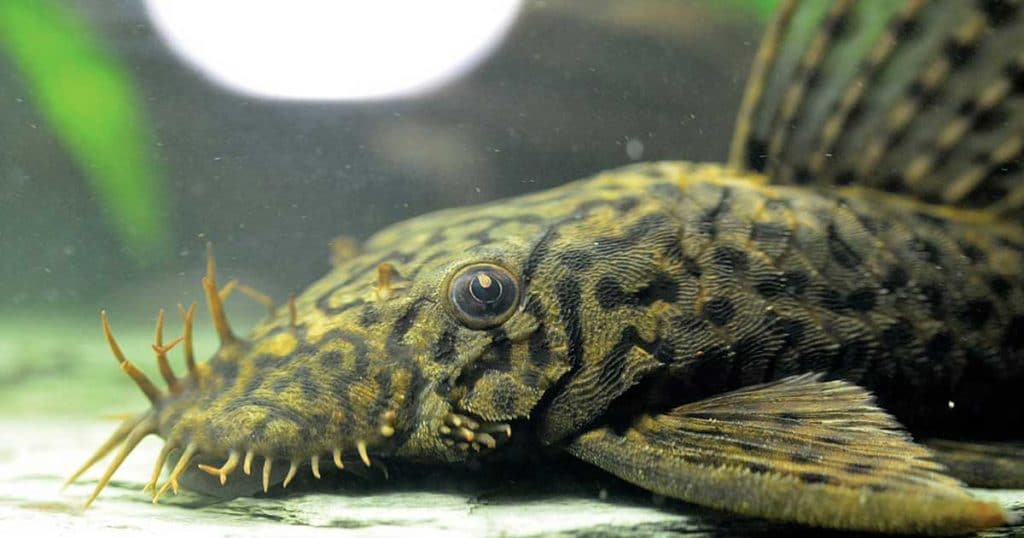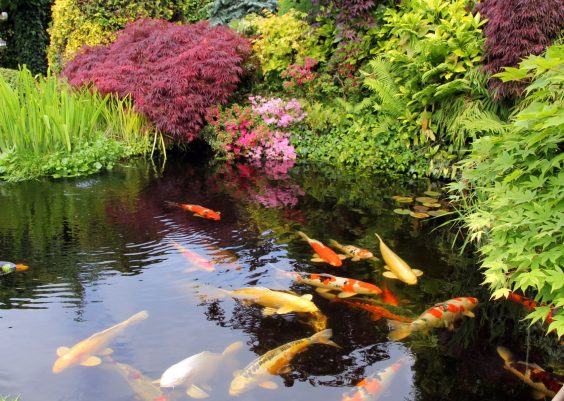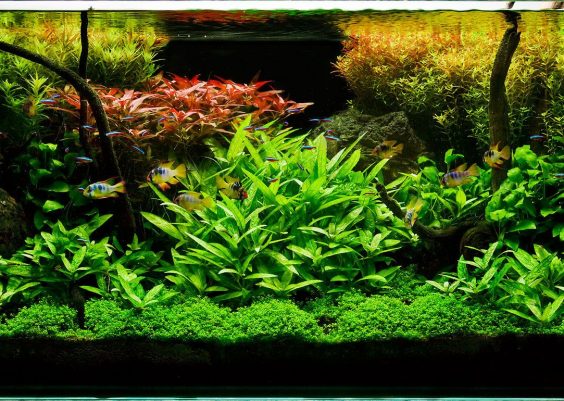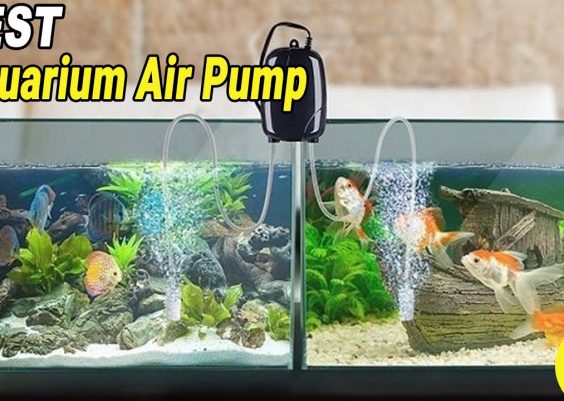Contents
- How to Pick The Best Algae Eater for Your Aquarium?
- A-List of Best Algae Eaters For Your Aquarium
- 1. Chinese Algae Eater
- 2. Whiptail Catfish
- 3. Otocinclus Catfish
- 4. Siamese Algae Eater
- 6. Molly Fish
- 7. Hillstream Loach
- 8. Bristlenose Plecostomus
- 9. Florida Flag Fish
- 10. Mystery Apple Snail
- 11. Malaysian Trumpet Snail
- 12. Ramshorn Snail
- 13. Nerite Snail
- 14. Rabbit Snail
- 15. Ghost Shrimp
- 16. Amano Shrimp
- 17. Bamboo Shrimp
- Wrapping Up!
Algae eaters have played an important role in the aquarium-keeping hobby for maintaining the natural ecosystem we all attempt to mimic.
Thanks to their expertise in algae elimination, along with their quirky appearance and habits, they are amazing additions to your aquatic family. An effective algae eater not only keeps algae under control. Besides, many of them are bottom-feeding scavengers, clearing up any uneaten food before it becomes a problem.
In this post, we’re going to share a list of the best clean-up crews for your fish tank and show you tips on choosing the most suitable ones.
How to Pick The Best Algae Eater for Your Aquarium?
The first thing you should consider when picking your algae eater is what type of algae is in your tank.
If you’re handling a specific kind of algae, your best bet is to select an algae eater that will eat that kind of algae.
For aquariums with more large-scale algae issues, it might help to bring two or three types of algae eaters to your tank, provided that they can live with each other.
So what are the different kinds of algae you might have in your aquarium?
Hair algae: Also called thread or filamentous algae, hair algae is light green and develops in wispy filaments. It grows rapidly and attaches to any aquarium surface.
Blue-green algae: Also called cyanobacteria, blue-green algae often have a pinkish-red color. It’s single-celled and begins with one or two spots but quickly grows.
Brown algae: Also called diatoms, brown algae are single-celled with a brown color. The algae appear as a dusting over aquarium surfaces and then transform into a thick mat over the course of several days.
Brown slime algae: Also called dinoflagellates, brown slime algae is symbiotic, providing nutrients for inverts like snails but might take over the aquarium.
Black beard algae: Black or dark purple in color, black beard algae often spread on tank plants.
Green algae: This kind of algae is also called algae growth, and it can happen if the lighting is too bright or you don’t let your aquarium cycle appropriately.
Green spot algae: This kind of algae thrives in aquariums with bright lighting, and it can be difficult to get rid of. It mainly spreads on tank walls and slow-growing plants.
Moreover, when choosing the options for algae eaters, you also need to ponder over the conditions in your aquarium.
Algae-consuming fish, snails, and shrimp all have their specific requirements for tank parameters, so you will either have to pick one that is suitable for the tank conditions or adjust your aquarium conditions to suit your new clean-up crew.
Eventually, you need to find how easy it is to care for the algae eater.
Some species need more care than others, especially when it comes to supplemental feeding.
Unless your aquarium is releasing a lot of algae, you will likely need to fill your algae eater’s diet with some types of vegetables or algae pellets and wafers.
A-List of Best Algae Eaters For Your Aquarium
1. Chinese Algae Eater

The Chinese algae eater is simple to handle and performs well in aquariums of at least 30 gallons in capacity.
These fish can extend up to 10 inches but might become more aggressive as they grow. Thus, it would be best to be careful about housing them in an enclosure with delicate fish species.
On the other hand, their aggression can be considered an advantage. They are one of the only algae consumers that can be raised with big and semi-aggressive fish like cichlids.
Chinese algae eaters require a pH from 6.8 to 7.4 with a KH between 8 and 10. They would love to live in warmer water temperatures, and they need a herbivorous diet to complement their feeding on algae.
These fish are not one of the most efficient algae eaters on the list as they will probably grow lazy when they become bigger, but they may eat different types of algae while young.
Plus, you should also build some hiding places such as hollow logs or rock caves for your algae eater.
2. Whiptail Catfish
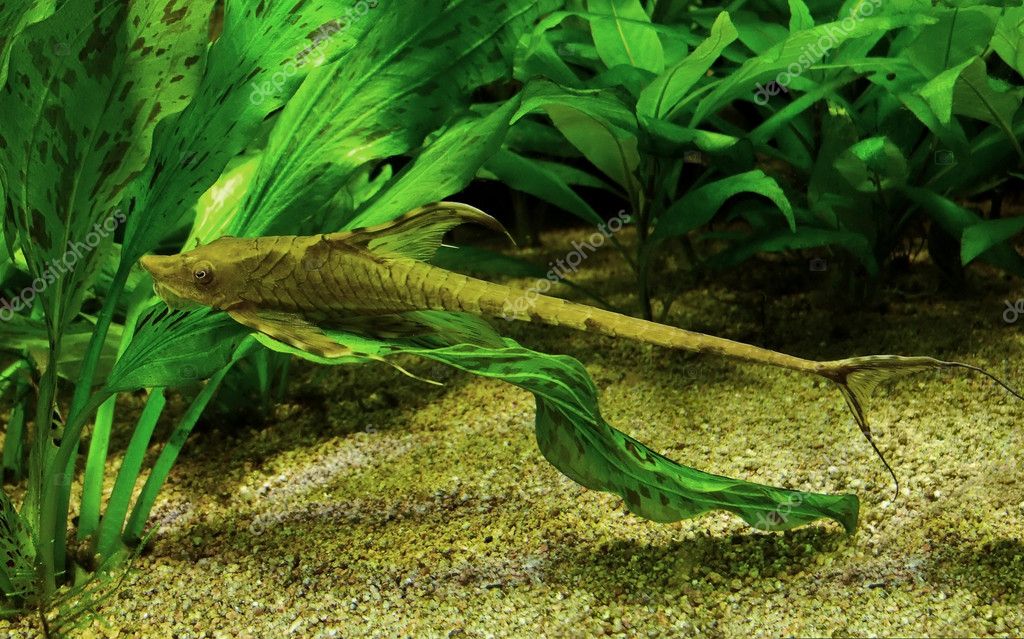
A kind of armored catfish, the whiptail is fairly easy to handle and features a peaceful temperament.
This species comes in neutral colors such as tan and black, and they can reach up to 6 inches long, so they need a tank of at least 50 gallons in capacity.
These fish are omnivorous, so they not only eat algae but also feed on detritus like leftover fish food.
They would require a KH from 4 to 8 with pH in the 6.5 to 7.0 range. Their preferred water temperature ranges from 73 to 79 degrees Fahrenheit as they hail from the tropical areas in South America.
3. Otocinclus Catfish

This is one of the smallest algae cleaners on this list – the otocinclus catfish can develop up to 2 inches long.
These fish have common in appearance with the larger Chinese algae eater, but they are far more peaceful.
They thrive well in community aquariums and live in harmony with other bottom-feeders, but they shouldn’t be raised with large or aggressive fish like cichlids.
Octocinclus catfíh are fairly easy to maintain, but they require a large aquarium of at least 30 gallons. Thereby, they have a sufficient amount of algae to feed on. And they should also be kept in schools.
These fish require a pH ranging from 6.5 to 7.5 but can withstand some variety in water chemistry. They do an excellent job of eliminating brown algae in a short time before they become problematic in your aquarium.
4. Siamese Algae Eater

The Siamese algae eater is regarded as one of the best algae-consuming species as it has the ability to eat a number of algae types.
These algae-cleaning crews are moderately peaceful and simple to care for. Thus, they might be a perfect option for novice aquarium hobbyists, doing a good job of controlling algae growth in a new tank.
Siamese algae eaters require an aquarium size no smaller than 30 gallons, and they need a pH from 6.5 to 7.0 with a temperature from 75 to 79 degrees Fahrenheit.
These species can be kept in community aquariums. In addition to algae, you can also feed them with algae wafers or pellets, ensuring they are not hungry.
6. Molly Fish
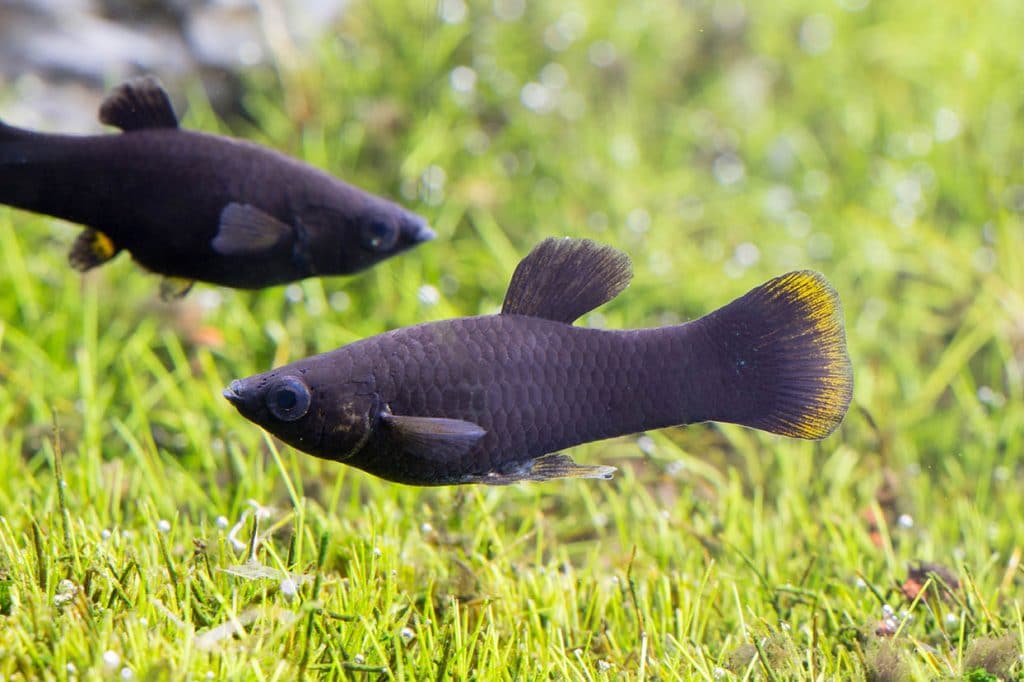
While they might not mainly feed on algae like other options, molly fish and other livebearers will eat algae from time to time if it is available in your tank.
Other livebearers include swordtails and platies. Swordtails are unique as they have various colors. You can easily differentiate between the sexes as males tend to have a long sword-like projection at the base of their tails. Similarly, platies also come in a range of colors and patterns.
Mollies and other livebearers are peaceful and do well in community aquariums from 15 gallons in capacity or larger based on how many you keep.
Molly fish reach 2-5 inches long on average and prefer a pH from 7.5 and 8.5.
One thing to note is that these fish have a high reproduction rate, so ensure you provide enough space to accommodate them.
7. Hillstream Loach
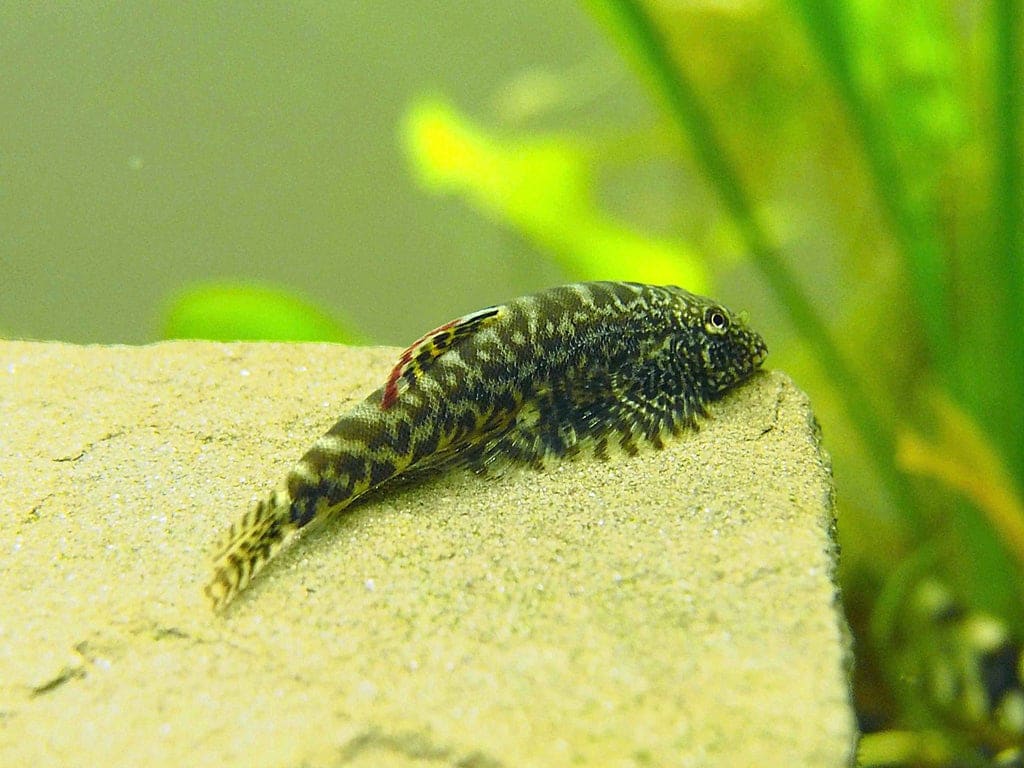
Like a miniature stingray, a hillstream loach often utilizes its modified venture part to cling to driftwood, plants, rocks, or aquarium glass. Hillstream can feed on all the algae available in your tank.
These fish are hardy and tolerant of a wide variety of water parameters (65 to 80 degrees Fahrenheit). You can raise them in a group of at least 3 to 4 to somehow ease their aggression.
8. Bristlenose Plecostomus
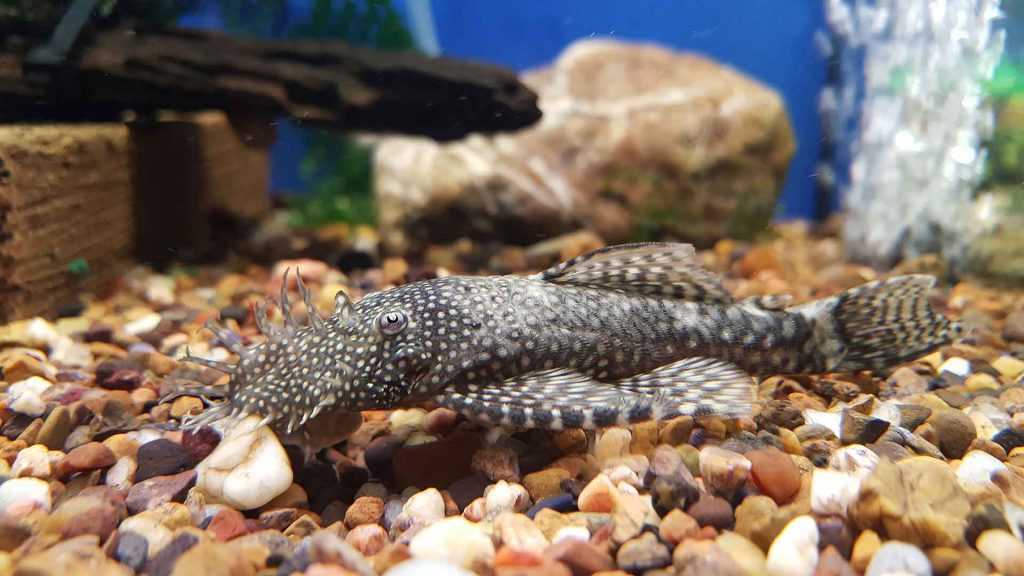
Also called the Brislenose catfish, this fish gets its name for the whisker-like projections on its snout. It has the ability to clear up any algae and leftover fish food in your tank.
It’s easy to care for these fish, though they might extend up to 5 inches long. Bristlenose plecos can live with peaceful critters and tolerate a considerable range of aquarium conditions.
However, they would want a pH ranging from 6.5 to 7.5, with slightly hard to slightly soft water.
The minimum recommended aquarium size is 20 gallons. These algae eaters tend to need supplemental feeding with algae wafers, in addition to most kinds of algae (particularly green spot algae).
9. Florida Flag Fish
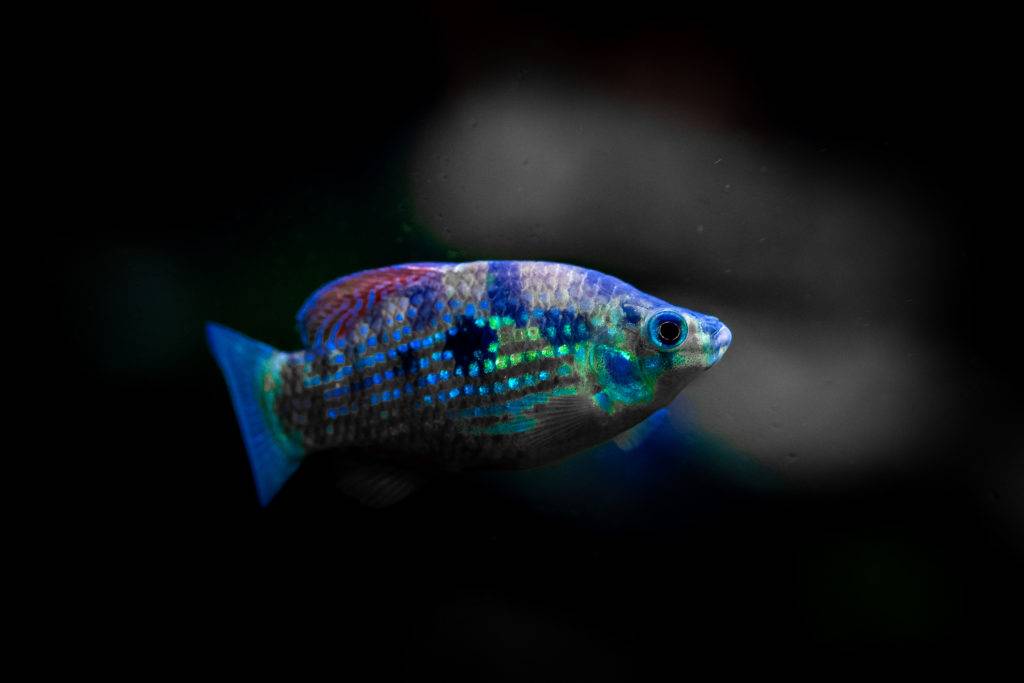
A kind of killifish, the Florida flag fish gets its name due to its resemblance to the stripes and stars on the US flag. It is a striking little nano fish filled with bright green, blue, red, and gold iridescent spots.
These fish mostly appears as peaceful species but can become aggressive during spawning time. They are one of the few on the list who will consume hair/thread algae. In addition, they also feed on black beard algae and other fuzzy types.
Florida flag fish thrive best in fast-moving, cool water community aquariums (70 to 85 degrees Fahrenheit).
10. Mystery Apple Snail
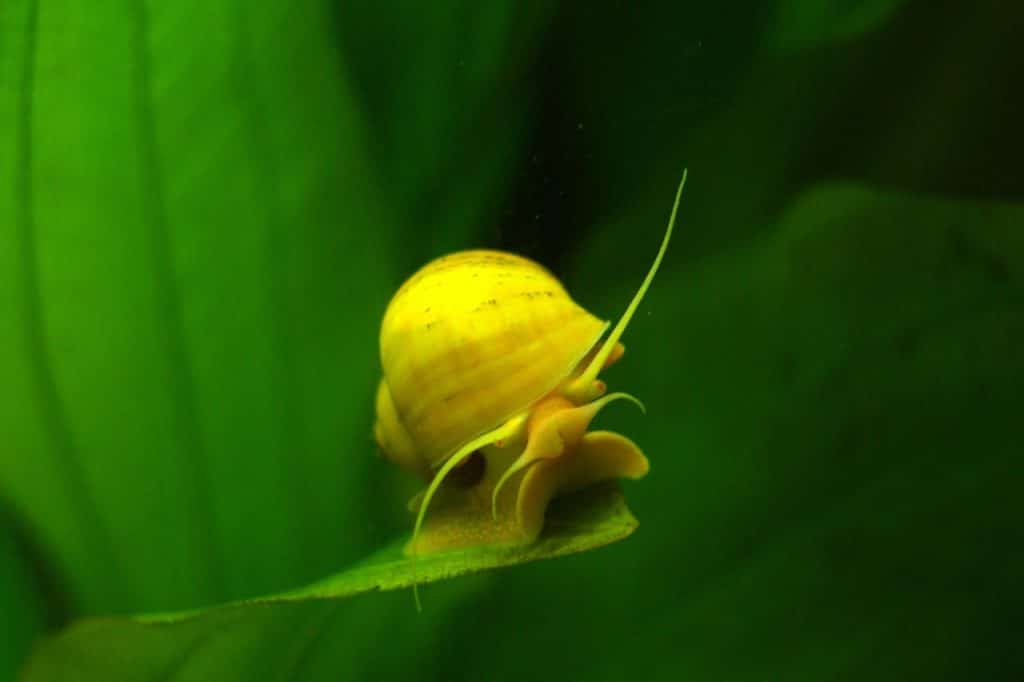
As these snails are usually sold as fry, many owners do not realize how big they can become (up to the size of a baseball).
Mystery Apple Snails have a number of colors, though bright yellow is the most widely seen. They can clear up most kinds of algae, especially glass algae, plant algae, and substrate algae. Plus, as true detrivores, they can eat decaying plant matter and leftover fish food.
These creatures have the ability to fend for themselves but might be a target for predators when they’re young.
11. Malaysian Trumpet Snail
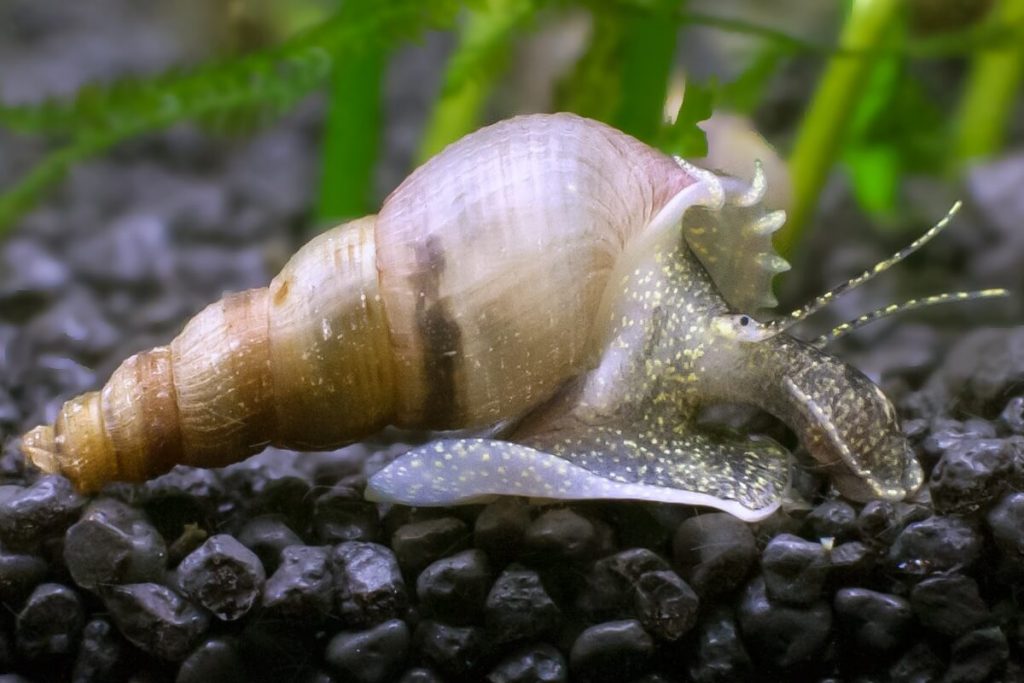
Among the smallest crews on the list, the Malaysian trumpet snails are typically under one inch long and love eating soft algae.
These critters have many different colors and feature long shells that come to a point. They consume some types of algae but don’t eat plants, so they’re a perfect option for a planted aquarium.
The snails require a minimum 10-gallon tank and a pH from 7.0 to 7.5. They are simple to handle and flourish in community aquariums with peaceful species.
Remember that this type of snail will probably plow through the substrate searching for food. Therefore, be careful when you keep them with rooted plants.
12. Ramshorn Snail

These snails get their names as the shape of their shell is similar to a ram’s horn. They can eat up numerous types of algae, decaying plant matter, and leftover fish food.
Ramshorn snails prefer living with smaller and more peaceful types of fish. They might get attacked by predatory fish like cichlids and loaches.
The snails have a maximum length of one inch and prefer neutral tank water around 7.0 pH. You can house them singly, or with other ramshorn snails, or nerite snails.
13. Nerite Snail
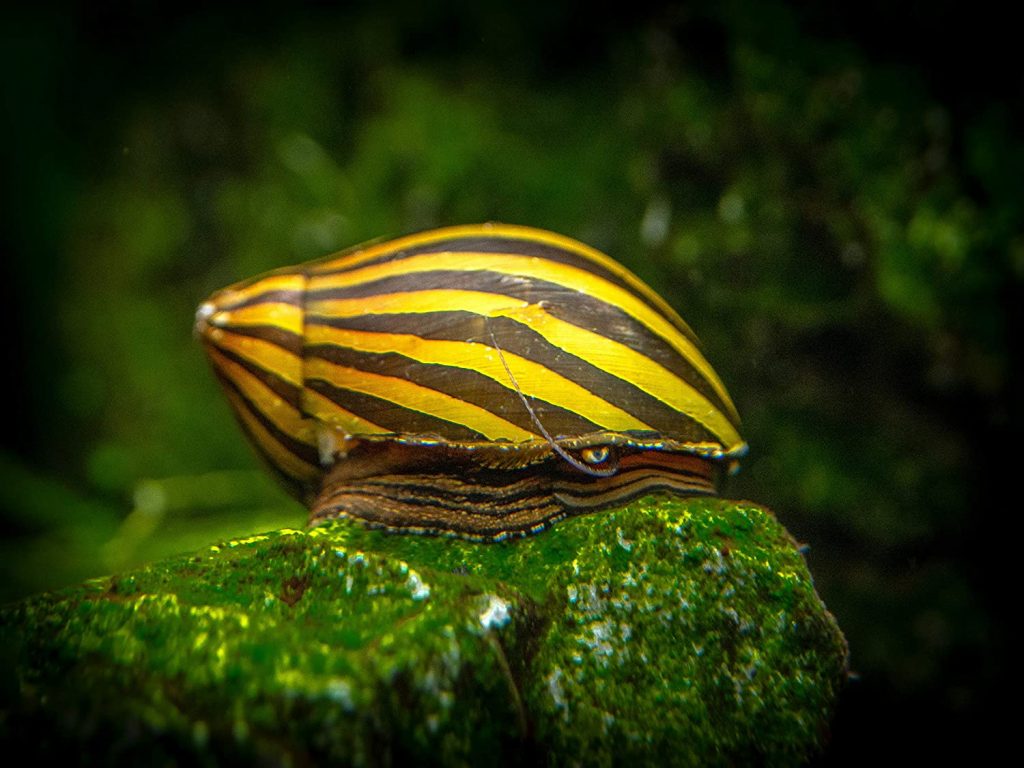
This is a popular option for algae eaters -nerite snails feature black striped patterns on their shells. They can feed on all kinds of algae, even green spot algae.
These algae-eating snails can reach more than one inch in length, so you need to consider raising them with large and predatory species.
The snails thrive well in an environment that has a 6.5 to 8.5 pH and a 12 to 18 KH. They can be tolerant of a variety of water parameters between 65 to 85 degrees Fahrenheit.
One thing to remember is that these creatures struggle to turn over if they fall on their back. Make sure you’re really careful when handling them.
14. Rabbit Snail

Named after the long antennae that reach out of their heads, these nails are large algae-consuming inverts to your freshwater aquarium. As fully grown, rabbit snails can extend up to 5 inches in diameter. They feature long conical shells covered with black, white, and brown.
These algae-eating creatures require at least a tank of 30 gallons. They prefer temperatures between 76 and 84 degrees Fahrenheit and neutral water (a pH of 6.5 to 7.5 and a KH of 2 to 15.
In addition to algae, they can feed on decaying plant matter and other detritus, doing a good job of cleaning your tank water.
15. Ghost Shrimp

Ghost shrimp are named after their transparent bodies, giving you a hand in dealing with algae in your fish tank.
While their bodies are crystal-clear, they have a yellow or orange spot in the middle of the tail that makes them really outstanding in an aquarium. Their menu often consists of algae and organic plant matter.
These algae eaters can grow up to 2 inches long, and they are simple to handle in a 10-gallon aquarium with a temperature range of 68 to 85 degrees Fahrenheit, a pH range of 6.5 to 8.0, and a KH range of 3 to 10.
They are naturally peaceful and incredible scavengers for a community aquarium when housed with other small and non-aggressive creatures.
16. Amano Shrimp

Amano Shrimp is another type of algae-eating shrimp for your tank. They only extend up to 2 inches long, so they can be raised in fairly small tanks.
They are easy to care for and maintain. These creatures require soft to the slightly hard water with a pH between 6.5 and 7.5. They prefer warmer water temperatures ranging from 72 to 78 degrees Fahrenheit, yet they are adaptable provided that their other requirements are satisfied.
This species thrives best in groups of three or more and can be housed with small to medium-sized peaceful fish. Keep in mind that they might become a target for large and aggressive tank mates like goldfish and cichlids.
Besides algae, these algae eaters also consume uneaten fish food and other detritus, keeping your tank clean and clear.
17. Bamboo Shrimp

These shrimp are covered with a reddish-brown color and a white stripe. Bamboo shrimp can grow up to 2 to 3 inches long, requiring a minimum aquarium size of 20 gallons. They prefer a pH range of 7.0 to 7.5, with slightly hard water and high water quality.
Provided that they have sufficient algae and detritus to consume, caring for these cleaning crews is a piece of cake. Besides, you can also supplement their diet with crushed algae wafers.
Wrapping Up!
There are no perfect algae eaters for all tanks.
Before picking your algae eater, you have to consider many factors. What is the type of algae you have in your aquarium? What are the size and current conditions of your tank? And what are any other inhabitants you have already kept?
Ideally, do careful research on each option and pick the best fit for your tank. Then share your selection in the comment section. We would love to hear from you!

